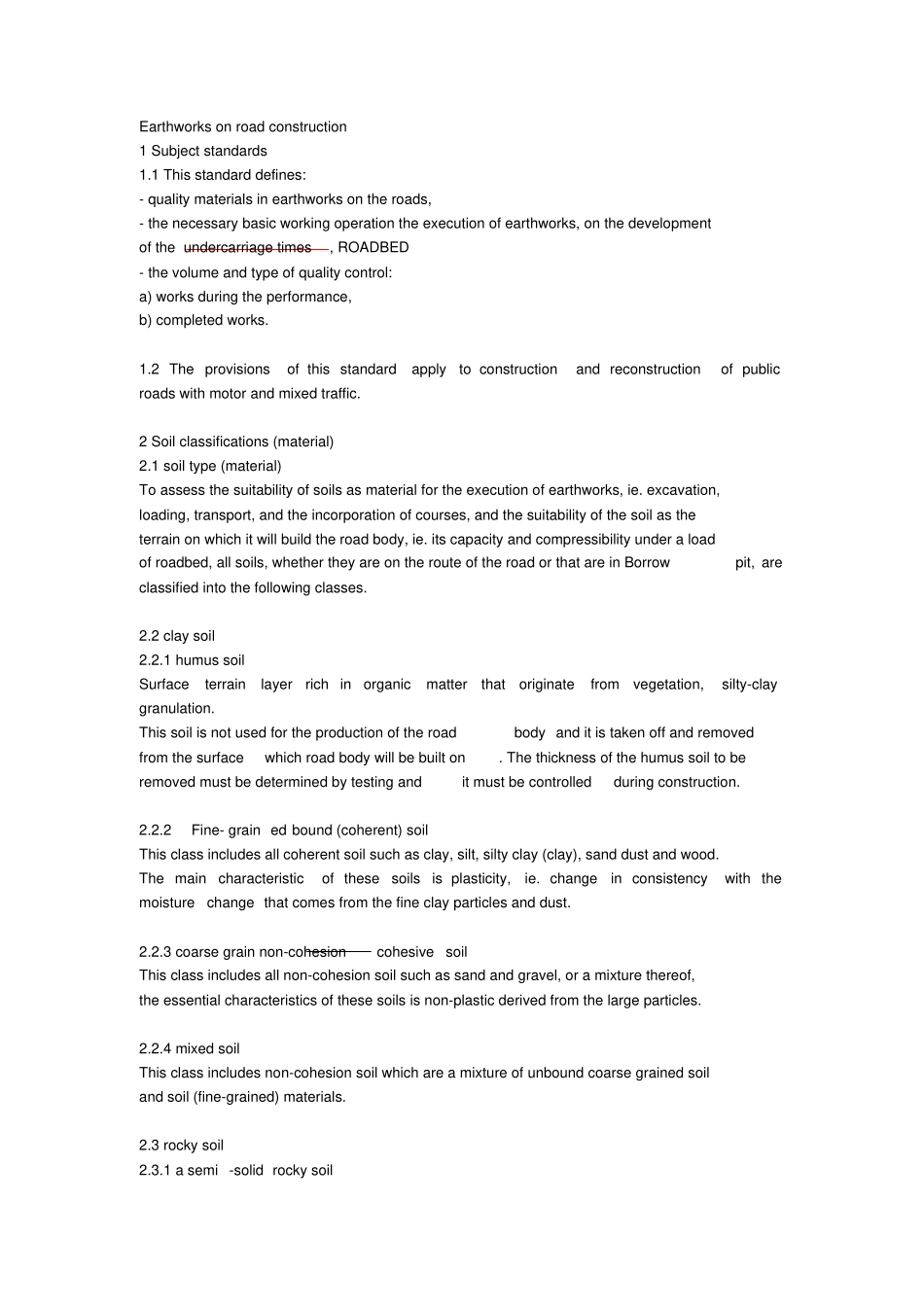Earthworks on road construction 1 Subject standards 1.1 This standard defines: - quality materials in earthworks on the roads, - the necessary basic working operation the execution of earthworks, on the development of the undercarriage times, ROADBED - the volume and type of quality control: a) works during the performance, b) completed works. 1.2 The provisions of this standard apply to construction and reconstruction of public roads with motor and mixed traffic. 2 Soil classifications (material) 2.1 soil type (material) To assess the suitability of soils as material for the execution of earthworks, ie. excavation, loading, transport, and the incorporation of courses, and the suitability of the soil as the terrain on which it will build the road body, ie. its capacity and compressibility under a load of roadbed, all soils, whether they are on the route of the road or that are in Borrow pit, are classified into the following classes. 2.2 clay soil 2.2.1 humus soil Surface terrain layer rich in organic matter that originate from vegetation, silty-clay granulation. This soil is not used for the production of the road body and it is taken off and removed from the surface which road body will be built on. The thickness of the humus soil to be removed must be determined by testing and it must be controlled during construction. 2.2.2 Fine- grain ed bound (coherent) soil This class includes all coherent soil such as clay, silt, silty clay (clay), sand dust and wood. The main characteristic of these soils is plasticity, ie. change in consistency with the moisture change that comes from the fine clay particles and dust. 2.2.3 coarse grain non-cohesion cohesive soil This class includes all non-cohe...


